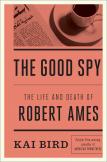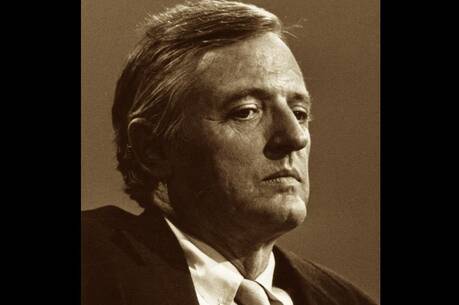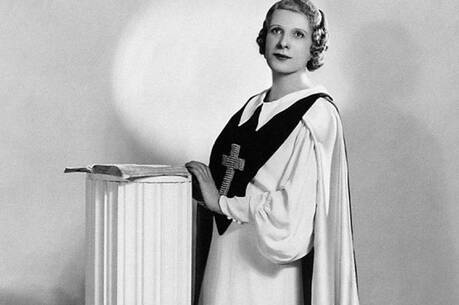The Company Man
Why should anyone bother to read 400 pages about the life and the career of a man who died 30 years ago, an unknown second-level officer in the Central Intelligence Agency, even if the book is well researched and well-written? Answering this question requires us to work out some prior questions. This is quite appropriate, since we are dealing with an agency whose stock in trade is the answering of questions, even if the answers are not provided to the general public. The initial easy questions are: 1) Who was Robert Ames? and 2 ) why was his career important?
Ames, unlike the early stars of the C.I.A., came from a working class family in Philadelphia and attended LaSalle University. Being tall, he developed an early and lasting enthusiasm for basketball; he was a “sixth man” on LaSalle’s national championship team in 1956. He also excelled as a student before doing two years service in the Army working on signals intelligence in Ethiopia for the National Security Agency, an agency which at that time had a very low public profile. During his time there, he converted to Catholicism, which, as Bird remarks, “suited his future profession.” He also began to study Arabic, which over the years he was to master and to make a cornerstone of his career. He began to work for the C.I.A. in 1961. Most of his career was spent in the Middle East, with important tours in Lebanon and Iran, where he served under Richard Helms, a future director of the C.I.A. In Lebanon he grew close to Ali Hassan Salameh, an affluent Palestinian, both flamboyant and fatalistic, who was a member of the inner circle around Yassir Arafat. Ames treated him as a friend and source rather than as an “agent” or paid spy. Salameh was widely thought to be involved in planning the massacre of Israeli athletes at the Munich Olympics in 1972. In 1979 he was killed by Mossad, the Israeli intelligence service, in an explosion in Beirut. Salameh, Bird argues, provided a back channel for communications between the U.S. government and the Palestine Liberation Organization. So the C.I.A. was not greatly pleased by this demonstration of the skills of Mossad.
By then Ames had returned to Washington, where his skills were now highly valued and where in the early ‘80s he became a regular briefer on the Middle East for President Reagan and Secretary of State George Shultz. Just as his influence within the policy process was rising, Ames decided to make a quick return trip to the Middle East after an absence of five years. On April 18,1983, he happened to be in Beirut, where he was killed in the spectacular bombing of the U.S. embassy. At the time of his death, he was a widely admired professional but unknown to the general public; he was also a devoted family man living in suburban calm of Reston, Va., and as far from the James Bond world of blood, sex and intrigue as can be imagined. He had made his career by carefully cultivated contacts with thoughtful persons in the Arab world, contacts achieved and deepened through his grasp of Arabic language and politics. He was “the good spy,” both in the sense of having developed the skills needed for high quality intelligence work and in the sense of showing a character that could inspire trust in the often murky corridors of Washington and the dark streets of Middle Eastern capitals. Bird has through careful research and extensive interviews with former officers of the C.I.A. built an absorbing account of Ames as an inconspicuous but not insignificant figure in the intelligence world of the Carter and Reagan administrations, a period when the attention of the intelligence agencies was beginning to turn from the once all-absorbing conflict with the Soviet Union to the more unstable and divided world of the Middle East.
But the larger question we need to answer is what guidance does this biography, which can be seen as merely a fragment of a complex and still unfinished history, give us as our government continues to spend blood, treasure and credibility on the struggles of the Middle East. First, it reminds us of certain constant features of these struggles. One is the difficulty of combining our perception of our own interests and of the needs of the region with the political demands and pressures created by our relationship with Israel, which is far from being a client-state but is both a beneficiary and critic of U.S. policy.
Another is the problem of working within the political systems of the area, which are badly divided with shifting alliances and variable foreign connections. In the conflicts of the region, alliances are rarely stable and are nearly always limited by profound differences among the parties. The enemy of my enemy is likely to be both my enemy and my friend. The region which the United States wishes to stabilize and hopes to transform brings us into a world which makes Machiavelli seem both highly relevant and comparatively innocent. All this has greatly changed since the 1980s. It has only become more difficult.
Bird’s book also gives us a good angle for understanding continuing divisions within the world of intelligence services. The longstanding division between analysis and operations runs through the C.I.A. and other agencies and produces different ways of thinking and evaluating as well as different, sometimes conflicting, priorities. Ames built his career on the operations side of the house but was in most ways more like analysts in his personal style. The conflict between those who rely on intelligence drawn from human sources (“spies”) and those who rely on electronic methods of gathering information has a history, but it has recently been intensified by disclosures about the resources and activities of the National Security Agency. Ames and Bird clearly favor an analytic approach which emphasizes cultural, personal and historical factors which are not well captured by either electronic eavesdropping or by invasive operations on alien territory.
Ames’s approach is more likely to be effective when the task confronting U.S. policy makers is to bring a conflict to an end through agreement to move towards peace and when it is no longer a matter of forcing the participants in local conflict to accept the results produced by America’s use of overwhelming force. Bird sees Ames as a significant contributor to the peacemaking process in the Middle East. His portrayal of Ames is a valuable addition to the series of biographies he has devoted to more prominent shapers of U.S. policy since 1945, including J. Robert Oppenheimer, John McCloy, McGeorge and William Bundy. Ames’s problems are still largely our problems; his qualities of character and intellect are still what we need in intelligence work today.
This article also appeared in print, under the headline “The Company Man,” in the January 19-26, 2015, issue.








